An update on our IP Scholars
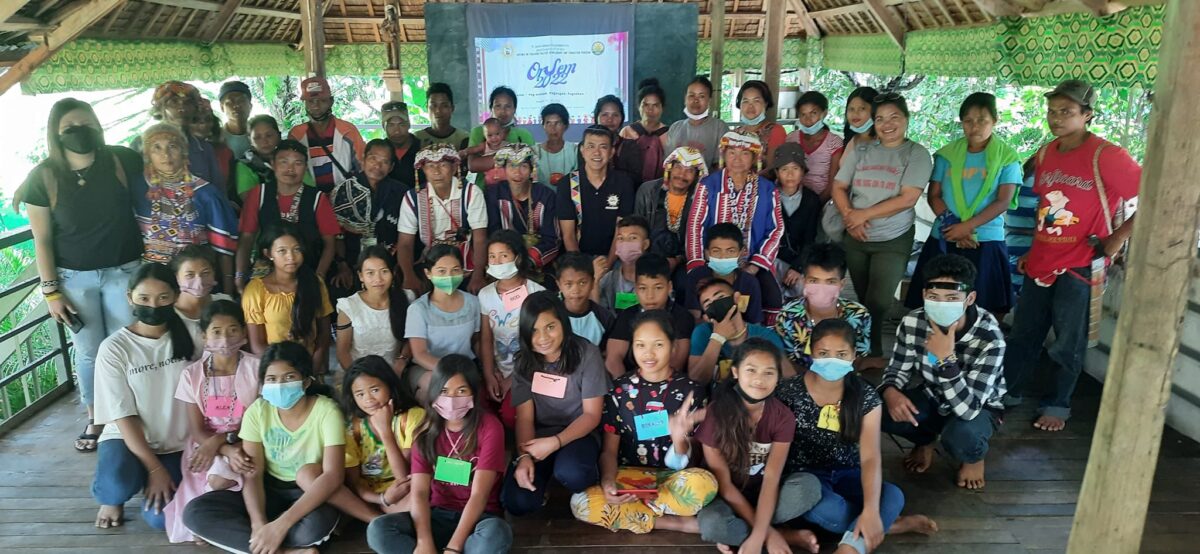

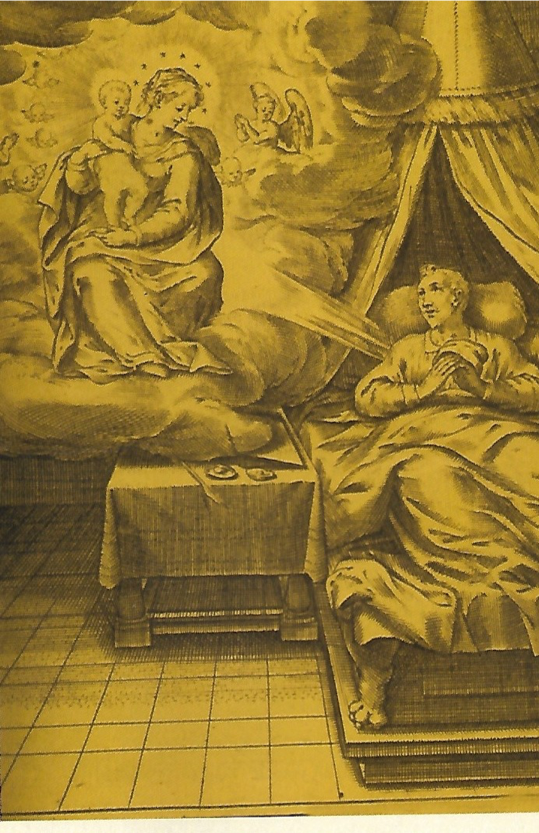
A reflection on how the women surrounding St. Ignatius played a significant role and brought him closer to Mama Mary.
by Francis Xin, SJ
According to Oscar Wilde, “Every sinner has a future, and every saint has a past.” The same is true for Saint Ignatius of Loyola.
Ignatius, originally known as Iñigo Lopez de Onaz y Loyola, was born in 1491 to a noble Basque family in northern Spain, near the town of Azpetia, in the Basque province of Quipuzcoa, in the old kingdom of Castile. He was the youngest of thirteen children. Iñigo never had much contact with his mother, Dona Marina, who may have died shortly after his birth. Consequently, Ignatius was turned over to a wet-nurse, Maria Garin, and spent his first years in her modest home rather than his father’s nearby castle, Casa Torre Loyola.
Each day, Maria would have taken baby Inigo up to Loyola. In time, the boy Iñigo went to the family’s Casa Torre and lived there until he was about 16 years of age. During those days, Dona Magdalena de Araoz, who was both his sister-in-law and the one who had taken the place of his mother, tried to describe for him what the fortress of Arevalo was like. Initially, Ignatius’ father steered him toward a church career. While still a young lad, he was tutored as a cleric, but when he seemed to show little interest in becoming a priest, his father sent him to Velazquez’s court at Arevalo where he served as a page and courtier from 1506 to 1517.
In August 1517, Ignatius was accepted as a courtier serving the Duke of Najera. He spent three years as a gentleman of the viceroy-duke’s household, and during most of this time, he remained in Pamplona. Later on, he joined the forces of the Duke, and became in charge of its defense.
In the spring of 1521, an invasion took place with the French occupying the city of Pamplona in Navarre. The Spanish garrison in the citadel stubbornly held out. Ignatius was foremost among the defenders and was severely wounded in the French bombardment of the citadel on May 20, 1521.
You may notice how the significant roles of women shaped the life of Ignatius. These women allowed Ignatius to experience motherly love while growing up. While very little is mentioned and written about the earlier years of St. Ignatius, I was led to contemplate and imagine how these encounters were like.
In Spain today, there is a simple chapel near the house of the mother of St. Ignatius, Dona Marina. As we know, his mother died very early. In the life of Ignatius, he had no mention of her at all. We cannot find any documentation of the relationship between them. Therefore, when he saw this chapel, he must have felt surprised or maybe even experienced anxiety. As I thought more about it, I was reminded of a song that goes:
”In the world only Mama’s dear, Child having Mama’s like a treasure, Close to Mama’s bosom, How happy you can’t tell; In the world only Mama’s dear, Motherless child is like a straw, Away from Mama’s bosom, Happiness nowhere to.find.“
If Ignatius had a chance, perhaps he would have expressed his gratitude to his mother. He would have thanked her for the gift of life. If he could, he would have come close to her, looked at her with affection, and wiped away her tears of guilt for not being able to take care of him. In addition, as he knelt beside her, he would have shared how he was not deprived of experiencing motherly love through the women around him.
My contemplation takes me further to imagining how Maria Garin took on the role of a mother to Ignatius. As he was crying for food, his nursing mother, Maria Garin, ran to him and carried him to breastfeed him. As he started to walk, she followed him patiently to prevent him from falling down. At night, she spent time with him until he fell asleep.
The following day, she brought him up to Loyola and allowed him to enjoy the time with his friends and companions.As Iñigo ran, he probably stopped and looked up to his mother in heaven with a big smile, as if to tell her, “Please be happy for me. Though it is sad that you are not with me, your love is very much present in my childhood:’
Another female in Iñigo life was his sister-in-law, Dona Magdalena. She brought books to him and taught him to read and write. Though sometimes his naughtiness upset her, she remained patient enough and held his hand in teaching him. On another occasion, he approached her and asked her about the characters from the books he was reading, while she teased him, which made them laugh together. He remembered vividly how she spent most of their time together telling him the story of courtly life before he left for Velazquez’s court at Arevalo. He recalled how she did her best to help him prepare for the unknown life in the future.
As he served as a page at Arevalo Castle, he was amazed by everything surrounding him. He enjoyed accompanying his master on his travels and was loved by the hostess, Dona Maria. She treated him like her own son, and supported him to pursue his desires and dreams. She listened to his struggles and passions, and encouraged him to face challenges. In his ups and downs, she stayed beside him and accompanied him. When Dona Maria’s husband passed away, even if she was in pain and needed company, she chose to let Iñigo go to pursue the bright future ahead of him.
At this point, I would like to imagine that Inigo noticed his emotions and tried to calm himself. He stood up, looked at his mother, and embraced her with much affection. No words were spoken but tears were enough to express how blessed he felt. As he finished his recollection of experiences, the young Iñigo led his mother to the statue of Mother Mary in the same Chapel. Tears once more flowed as they both gazed at the Blessed Virgin.
Here before him was another Mother whom he knew more intimately through the women of his earlier years. Iñigo thought that it was through his mother, Maria Garin, Dona Magdalena, and Dona Maria that he as able to develop a relationship with the Blessed Mother. All this time, he was never deprived o fhte expereinc of tenderness, care, and love of a mother with the many mothers that came along his way. On top of it all, he had an Eternal Mother who looked after him. Without a doubt in his mind, the Blessed Mother petitioned with her-that he be placed under the banner of the corss, and enjoy the companionship with our Lord, Jesus Christ. Tears were not enough to express the gratitude welling from his heart.
In his book Ignatius of Loyola: The Pilgrim Saint, Cornelius Michael Buckley asserts that, “The primordial bonding between Iñigo and his mother, or rather the nonexistence of such a bonding, suggests the absence of the protective, liberating, fostering maternal presence that would have given him early direction, basic confidence, and would have opened up new objectives for him.” Ignatius may not have experienced the love from his own mother, but maternal love was never absent in his early life. He was well taken cared of by a nursing mother, Maria Garin, in his infancy; he grew up well under the care of his sister-in-law, Dona Magdalena in his younger years; and he was well supported to pursue his dreams by his hostess, Dona Maria, in his adolescence. All the affection he received was for his relationship with his unseen biological mother, Dona Marina, and with Mother Mary.
As I look back, my trust in Mama Mary as a religious was also fostered by my personal experiences with women in my life. When my mother was busy with her work to support our family, my maternal grandmother invited me to have my meals with her. When my father got sick and had to stay in the hospital with my mother who took care of him, my aunt was there to ask me to live with her in the meantime. When my high school teacher, Ms. Song, learned that I was having a hard time continuing my studies, she voluntarily supported me. When I expressed my desire to apply for a religious life, though my mother felt the pain of separation, she still opened her arms to let me pursue my desire. Right now, even if I am far from all of them who have been constant sources of consolation in my life, their love remains with me. Their selflessness and generosity reflect the same virtues of Mama Mary. Whenever I see the statue of Mama Mary, I know that she is here with me – just like my grandmother, my aunt, my teacher, and my biological mother – constantly nurturing and supporting me.

2022, April. The Women in Ignatius’ Young Life. Windhover, Vol 1, pp 6-9.
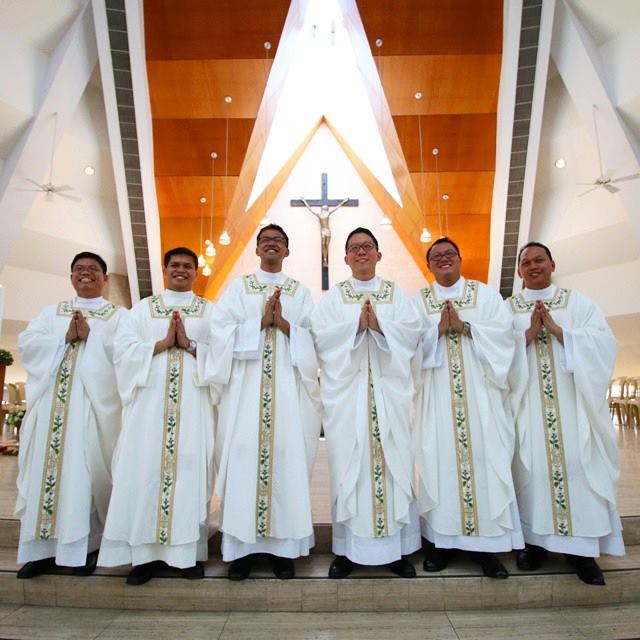
A Jesuit goes through a long and rigorous process prior to ordination. Here is a repost of an article written by Fr. Venancio S. Calpotura, SJ.
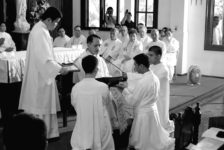
Please click here to read the article stages-in-jesuit-formation
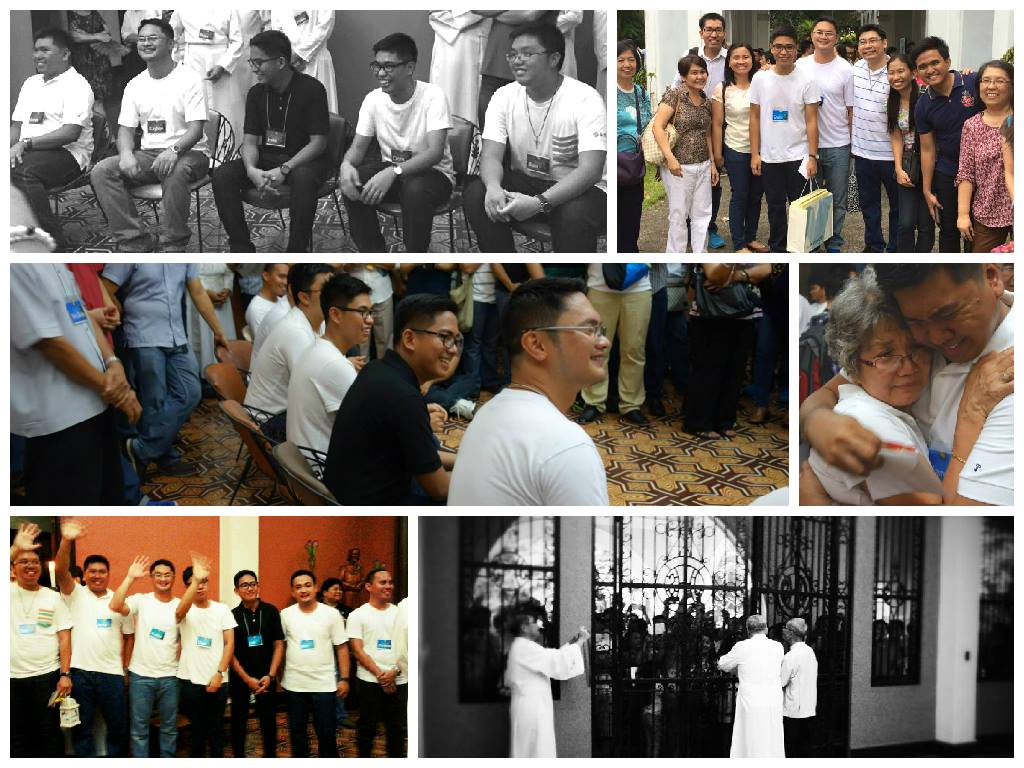
By Fr. Olivier Lardinois SJ, Assistant for Formation, Chinese Jesuit Province
This article was originally published in Jesuits in Asia Pacific 2015, the annual report of the Jesuit Conference of Asia Pacific. It can also be found in their website.
At the very heart of the Jesuit vocation lies a personal commitment to follow the call of Jesus to work through him, with him and in him at the service of the Kingdom of God, which grows anywhere love and justice flourish: “Follow me and I will make you into fishers of men” (Mark 1:17) This is
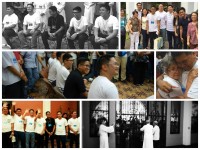
why several documents on Jesuit formation claim that God is the educator par excellence and why training for mission cannot succeed without helping the young Jesuit foster his friendship with Jesus. Through a solid and regular prayer life, the young Jesuit in formation cultivates his intimacy with Christ, which slowly teaches him how to better discern, teach, behave and love as Jesus himself would do. In fact, without an ability to convert himself daily in front of the Gospel and a deep desire to grow as a disciple of Jesus, a young man is unfit to enter or to stay in the Society of Jesus.
Another crucial dimension of Jesuit formation is to learn how to gain an ever-growing freedom of heart in front of all those things that can become a real obstacle to serving the mission well. Some examples of obstacles are over-dependence on the affection of our family or good friends, too great an attachment to material comfort, a recurrent desire to feel 100 percent secure, our own ideas or prejudices regarding other persons or social classes or cultures or religions, our inner fears and anxieties, a lack of faith in God’s actions, having too strong a need to have our achievements seen and praised by others, and giving too much attention to our own self-respect and face. This is why Jesuit formation endeavors to provide not just solid training in spiritual life towards conversion, but also a few psychological tools to help the future priest or brother to know his own personality better-his talents and limits, the inner wounds brought by early childhood, his patterns for leadership and the maintaining of relationships, his own gree, sexual impulse, anger or blues, etc. The more a man learns about how to cope well with his own imperfect character and psychology, the better he can serve others.
Another important challenge of Jesuit formation is to empower future priests and brothers so that they can serve, accompany and/or train people, with enough joy, abnegation, intelligence, discernment, common sense, discretion, flexibility, humility and creativity. Without possessing at least a few of these abilities, it will not be easy for them to pursue the main aims of the Jesuit mission: to inseparably promote faith and justice, to train men and women at the service of a more attractive Church and/or a better world, to do mission works at the frontiers i.e. where other priests usually do not go to serve, and to dialogue and cooperate with people of other cultures and/or religious faiths. This is why even as the young Jesuit studies philosophy or theology, he is asked to serve with confreres and collaborators in different kinds of challenging works to teach him how to work as part of a team and help him become a more mature, wise and loving human being. These works include service to the sick or to prisoners, teaching in a high school or university, social works at the service of the poor, intellectual research, preaching in front of an audience, youth training or pastoral leadership, media work, and spiritual guidance.
Last but not least, the main characteristic of Jesuit formation is the Magis Spirit. It means to learn how to reflect and to work at a deep level, so that the result of one’s efforts in mission work can produce many good and long-term fruit. Jesuit formation insists much on the high quality of intellectual  studies, which should not only include a solid introduction to the human sciences such as philosophy, social analysis and anthropology and/or psychology, but also good training on how to reflect,write or speak on various subjects in depth, with a sharp, critical spirit in front of the sources of knowledge which man uses, and with the realization that any reality if often quite complex to understand and judge. In this spirit, the young Jesuit is encouraged to experience at every stage of his formation various mission contexts, which will help him work effectively in today’s global and multi-cultural world.
studies, which should not only include a solid introduction to the human sciences such as philosophy, social analysis and anthropology and/or psychology, but also good training on how to reflect,write or speak on various subjects in depth, with a sharp, critical spirit in front of the sources of knowledge which man uses, and with the realization that any reality if often quite complex to understand and judge. In this spirit, the young Jesuit is encouraged to experience at every stage of his formation various mission contexts, which will help him work effectively in today’s global and multi-cultural world.

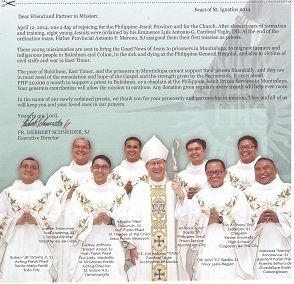
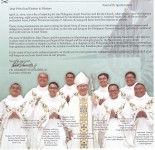 Eight young Jesuits were sent to bring the Good News of Jesus to Prisoners in Muntinlupa, to migrant farmers and indigenous people in Bukidnon and Culion, to the sick and dying at the Philippine General Hospital, and also to victims of civil strife and war in East Timor.
Eight young Jesuits were sent to bring the Good News of Jesus to Prisoners in Muntinlupa, to migrant farmers and indigenous people in Bukidnon and Culion, to the sick and dying at the Philippine General Hospital, and also to victims of civil strife and war in East Timor.
The poor of Bukidnon, East Timor, and the prisoners in Muntinlupa cannot support their priests financially, and they are in most need of the consolation and hope of the Gospel and the strength given by the Sacraments. It costs about P20,000 a month to support a priest in Bukidnon, opr a chaplain at the Philippine Jesuit Prison Services in Muntinlupa. Your geneours contribution will allow the mission to continue. Any donation given regularly every month will help even more.

 For over 400 years, San Jose Major Seminary has formed hundreds of Filipino priests for ministry in the dioceses all over the Philippines. This diocesan seminary aims at forming men of virtue, learning, spirit, and service– agents of renewal of the Church and society in the Philippines. Some of our more distinguished alumni include Most Rev. Luis Antonio Cardinal Tagle, D.D., Most Rev. Gaudencio Cardinal Rosales, D.D, and Most Rev. Orlando Cardinal Quevedo, D.D.
For over 400 years, San Jose Major Seminary has formed hundreds of Filipino priests for ministry in the dioceses all over the Philippines. This diocesan seminary aims at forming men of virtue, learning, spirit, and service– agents of renewal of the Church and society in the Philippines. Some of our more distinguished alumni include Most Rev. Luis Antonio Cardinal Tagle, D.D., Most Rev. Gaudencio Cardinal Rosales, D.D, and Most Rev. Orlando Cardinal Quevedo, D.D.
San Jose Major Seminary is in need of financial help at this time. Traditional fund sources have been drying up alarmingly. We are asking your help to build up the seminary’s endowment fund, and support its important work of training and forming the young priests who will eventually run our parishes and may someday play key roles in the Philippine Church. The Jesuits through the leadership of composer Fr. Arnel Aquino, S.J. are holding a benefit concert entitled, “Himig Heswita Sings for San Jose” with the special participation of Cardinal Tagle himself. This will be held on Saturday, August 23 and on Sunday, August 31, 7:00 p.m. at Leong Hall inside the Ateneo de Manila campus. Tickets are at P5,000 and P3,000 and P1,000. For ticket sale and reservation, please contact the San Jose Fundraising Office at 426-6091 (TL) or +63 999 759-2465 (SMART) or (GLOBE). You may also email sanjosedevelopmentoffice@gmail.com.
“Tend my sheep,” says the Lord (John 21:16). But who shall look after the shepherds? We hope you can take this rare chance to help form priests who will help bring Jesus to many souls. When you tend the shepherd, you tend the sheep. Thank you very much. May God bless you and your loved ones.